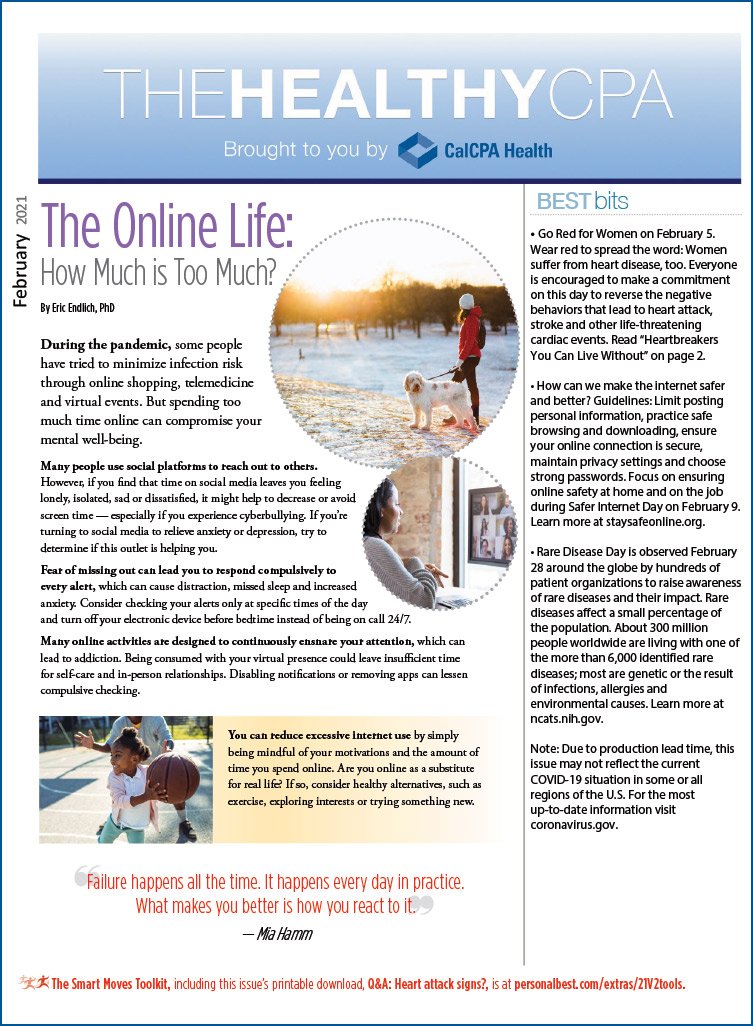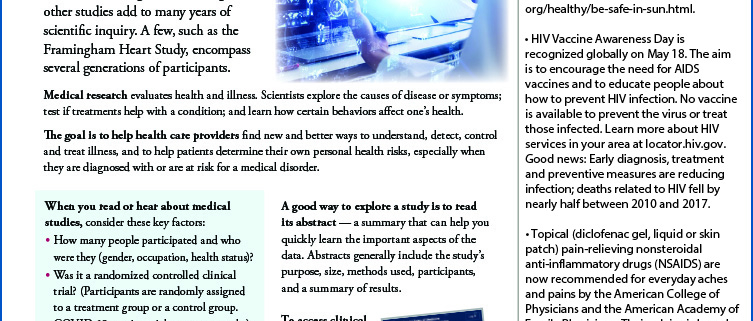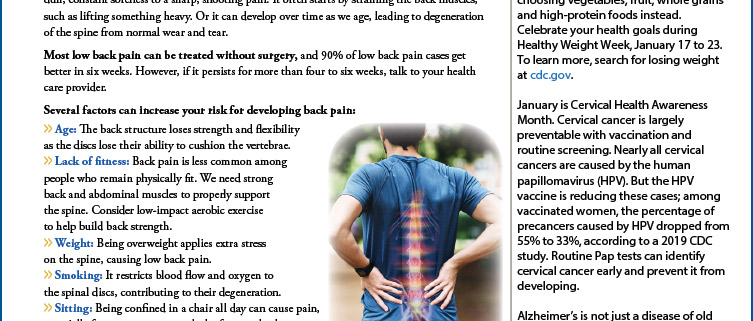News
 The eMagazine dedicated to improving members’ well-being
The eMagazine dedicated to improving members’ well-being
- Deciphering Medical Studies
- Digital Addiction
- Balancing Act: Work and Family
- Rethink Kid Food
- When to go to the ER?
- Choose the Right Helmet
In each issue you will find information and inspiration to help you with your health and wellness goals.

Many months into the COVID-19 pandemic, traveling long distances to visit family members here or abroad is often impossible or too risky due to the pandemic. Many people are feeling anxious and depressed about the separation and isolation.
Hopefully, by this time most of us have learned positive ways to cope with the loneliness and stress of the unknown. As our lives continue to be impacted by COVID-19, try to protect yourself by making positive choices.
Make it a daily priority to:
- Ensure time for exercise.
- Get plenty of sound sleep.
- Enjoy favorite leisure activities.
- Take breaks from the news.
- Learn relaxation strategies (e.g., deep breathing and meditation).
- Know what to do if you become sick or concerned about COVID-19.

Sooner or later, everyone experiences disappointment in life. Maybe you didn’t get the job or raise you expected, or you are faced with an unexpected relationship breakup. Or perhaps you failed to lose weight by spring.
There are countless examples of how something we hoped for or expected didn’t work out, and the ensuing disappointment can lead to anxiety, sadness and wondering how long you’ll feel down. Fortunately, you can learn to cope with disappointment and feel better.
Tips for dealing with disappointment:

Whether you prefer a brisk walk, yoga session or bike ride, there are so many benefits to exercise. It can help reduce your risk of developing heart disease, type 2 diabetes and certain cancers; can help improve your mental health; keeps bones and muscles strong as we age; improves sleep; and may help with weight control.
If you exercise just to lose weight, you may be aiming for an outcome you can’t fully control. Even when you eat well and exercise, the number on the scale can fluctuate. Instead of focusing solely on body weight, focus on inspiring numbers you can control more. For example:
- How long can you exercise? With frequent practice, you will slowly increase your amount of activity.
- How many steps do you take daily? Use an app to count steps, and gradually increase your number.
- How many repetitions of an exercise can you do? Start with a few sit ups, push-ups or bicep curls, and build on that number.
After a few weeks, you will start to see progress. If your weight goes down and your clothes fit better, that’s great. But even if they don’t, exercise still helps improve your well-being. That alone is worth the effort.
 The eMagazine dedicated to improving members’ well-being
The eMagazine dedicated to improving members’ well-being
- Get Wise to Exercise
- Dealing with Disappointment
- Family Separation Abroad During COVID-19
- Alcohol: What You Need to Know
- Cook It Up With Herbs and Spices
- Spring Cleaning: Using Chemicals Safely
In each issue you will find information and inspiration to help you with your health and wellness goals.
 The eMagazine dedicated to improving members’ well-being
The eMagazine dedicated to improving members’ well-being
- Immunity Support on Your Plate
- Avoid Doom Scrolling
- Take Care of Your Kidneys!
- Plant-Based: What Does It Mean?
- Drug interactions?
- What causes nightmares?
In each issue you will find information and inspiration to help you with your health and wellness goals.

By Cara Rosenbloom, RD
If you’ve read a headline that mentions immune boosting, don’t believe the hype. The idea of boosting the immune system with supplements or specific ingredients is misleading and scientifically inaccurate.
There are many things we can do to keep our immune system running smoothly, such as getting enough sleep, being physically active, minimizing stress and eating a balanced diet. But boosting immunity implies heightened action, which should be avoided — an overactive immune system is linked with autoimmune diseases, such as lupus or multiple sclerosis, and is equally harmful to your health as an underactive immune system. Immune boosting is a marketing term, not a medical term.
Let’s focus on supporting your immune system instead. Certain nutrients, including zinc, iron selenium, protein and omega-3 fats, as well as vitamins C, D and E, are critical for the growth and function of immune cells. Build meals with a variety of foods to get the nutrients your body needs.
- Get extra vegetables and fruit. They should fill half of your plate at every meal. Fresh, frozen and canned are all great choices.
- Add protein from fish, chicken, dairy, tofu or beans. The building blocks of protein (aminoacids) are essential for T-cell function, which protects the body against bacteria and viruses.
- Choose nuts and seeds. Include Brazil nuts for selenium; walnuts and flax for omega-3 fats; pumpkin seeds for zinc; and almonds or sunflower seeds for vitamin E.
- Enjoy fermented foods. Yogurt, kefir and fermented vegetables — such as sauerkrautor kimchi — contain probiotics, which may be linked to a strong immune system.
- Look for vitamin D. It’s found in fish, milk, fortified plant-based beverages and eggs. If you don’t eat any of these foods or get much sun, consider asking your health care provider to check your blood levels. You may need a vitamin D supplement.
It’s also important to minimize highly processed foods, such as soft drinks, candy, fast food and salty snacks. These foods lack nutrients and can impair the production of immune cells and antibodies.
© 2021 Ebix Inc. All rights reserved.
 The eMagazine dedicated to improving members’ well-being
The eMagazine dedicated to improving members’ well-being
- The Online Life: How Much is Too Much?
- Heartbreakers You Can Live Without
- Exercise and Mood
- Working From Home – With Kids
- Food, Stress and Emotional Eating
- BP vs. Heart Rate – What’s The Difference?
- Take Action Against Distraction
In each issue you will find information and inspiration to help you with your health and wellness goals.
 The eMagazine dedicated to improving members’ well-being
The eMagazine dedicated to improving members’ well-being
- Flu, COVID-19 and Cold Symptoms Compared
- Have You Got Your Back?
- 5 Exercise Missteps
- What is contact tracing?
- Liquid Meal Replacements: Pros and Cons
- How do I know if I have depression?
- 8 Safety Habits
In each issue you will find information and inspiration to help you with your health and wellness goals.
 The eMagazine dedicated to improving members’ well-being
The eMagazine dedicated to improving members’ well-being
- Save Time for Exercise
- Insight: Vision and Eye Health
- Prevent Colds 5 Ways
- The Ergonomics of Reaching Overhead
- Eating Smart: Better Breakfast Menu
- Dollars Sense: Subscription Boxes
- Health Screening Newborns?
- Annual Safe Gift Guide
In each issue you will find information and inspiration to help you with your health and wellness goals.










